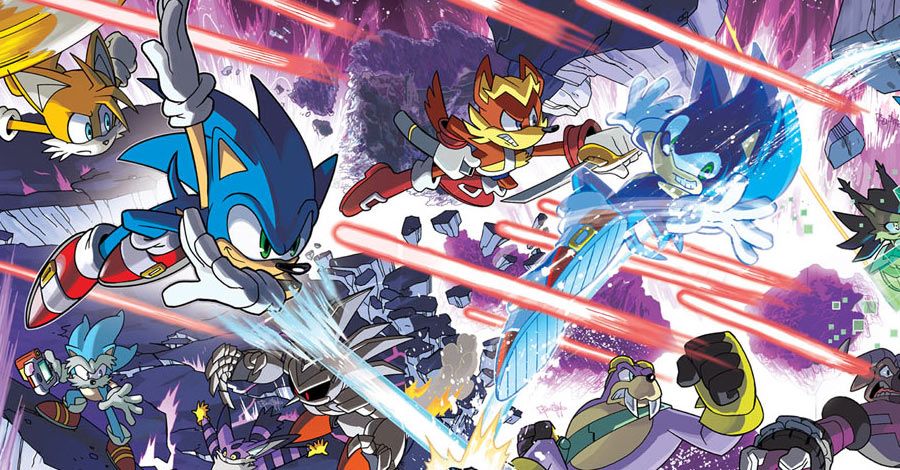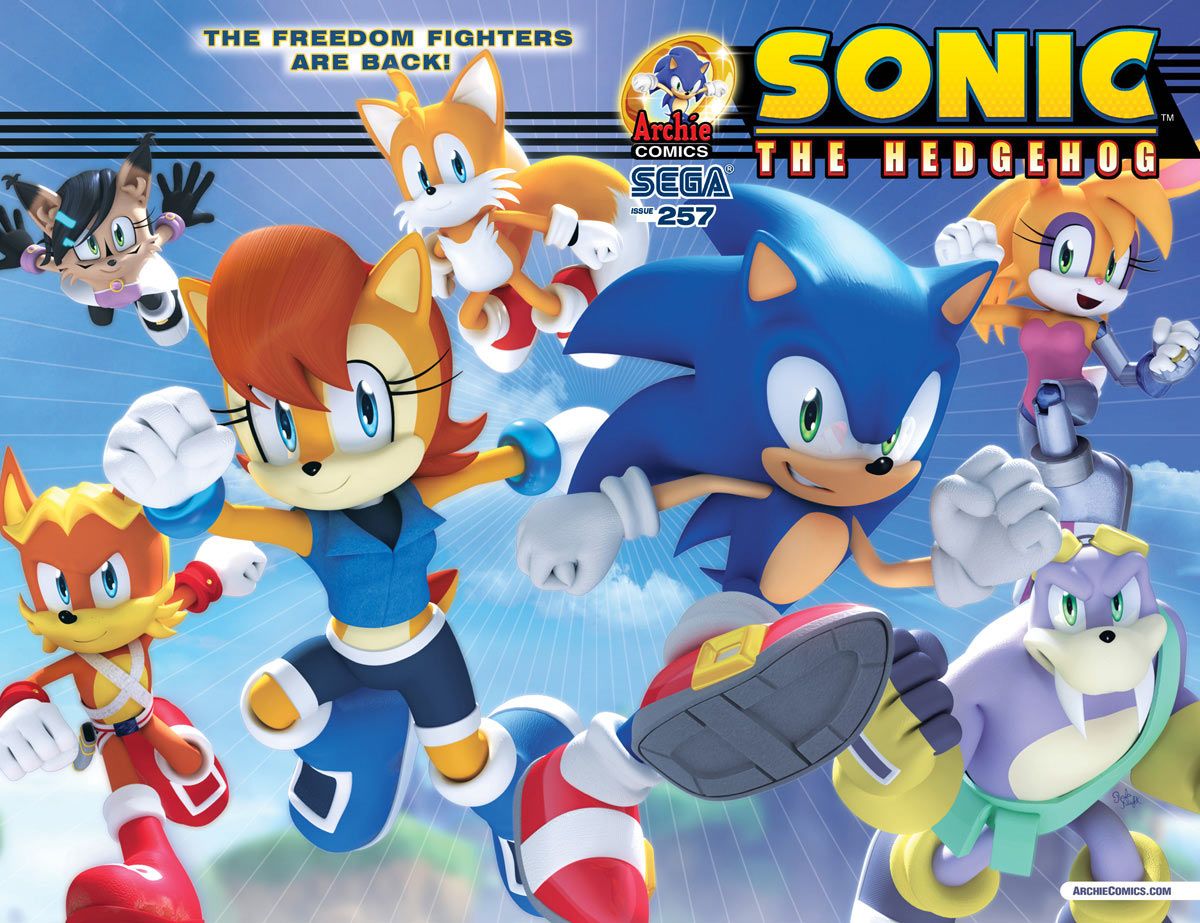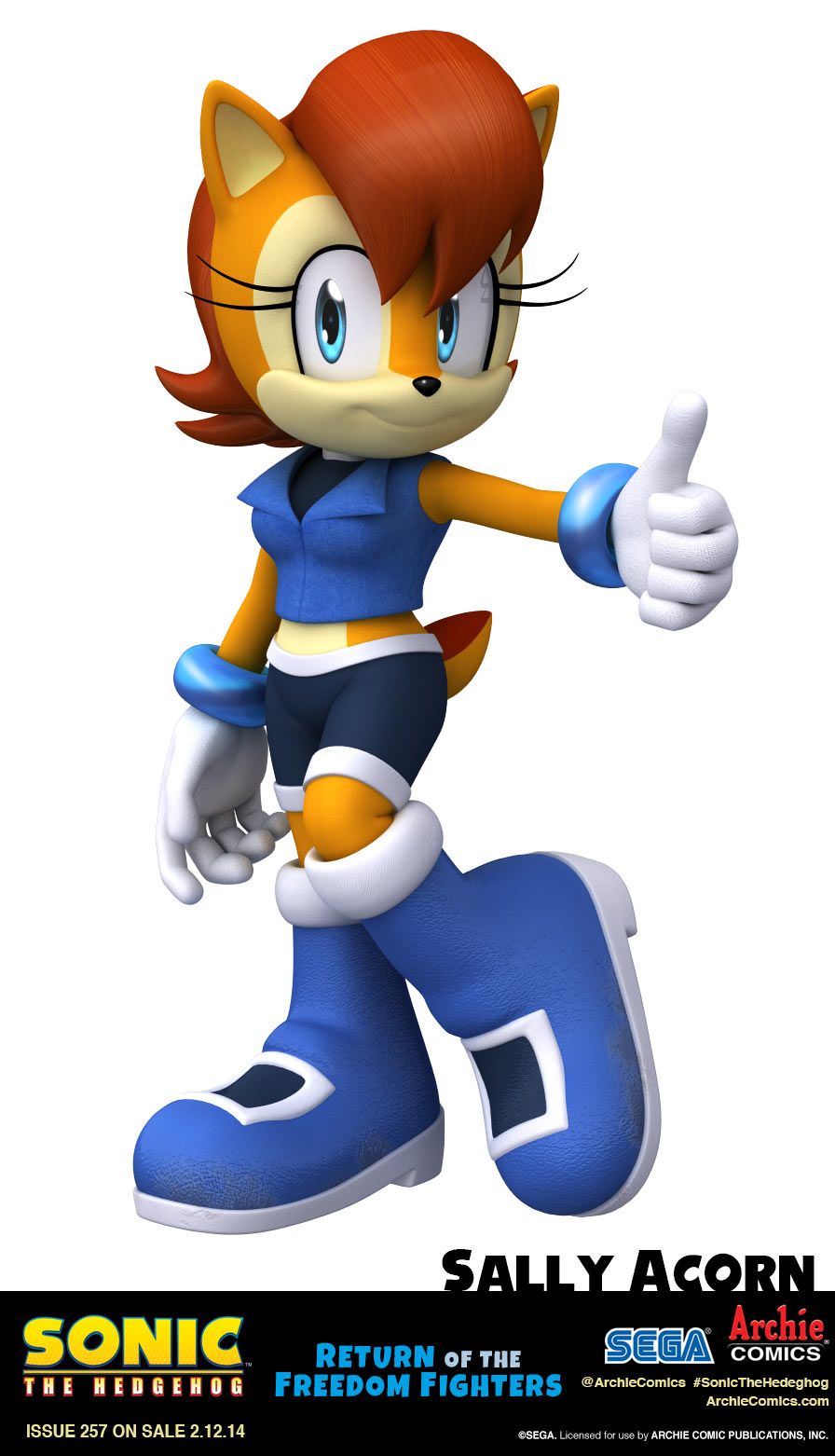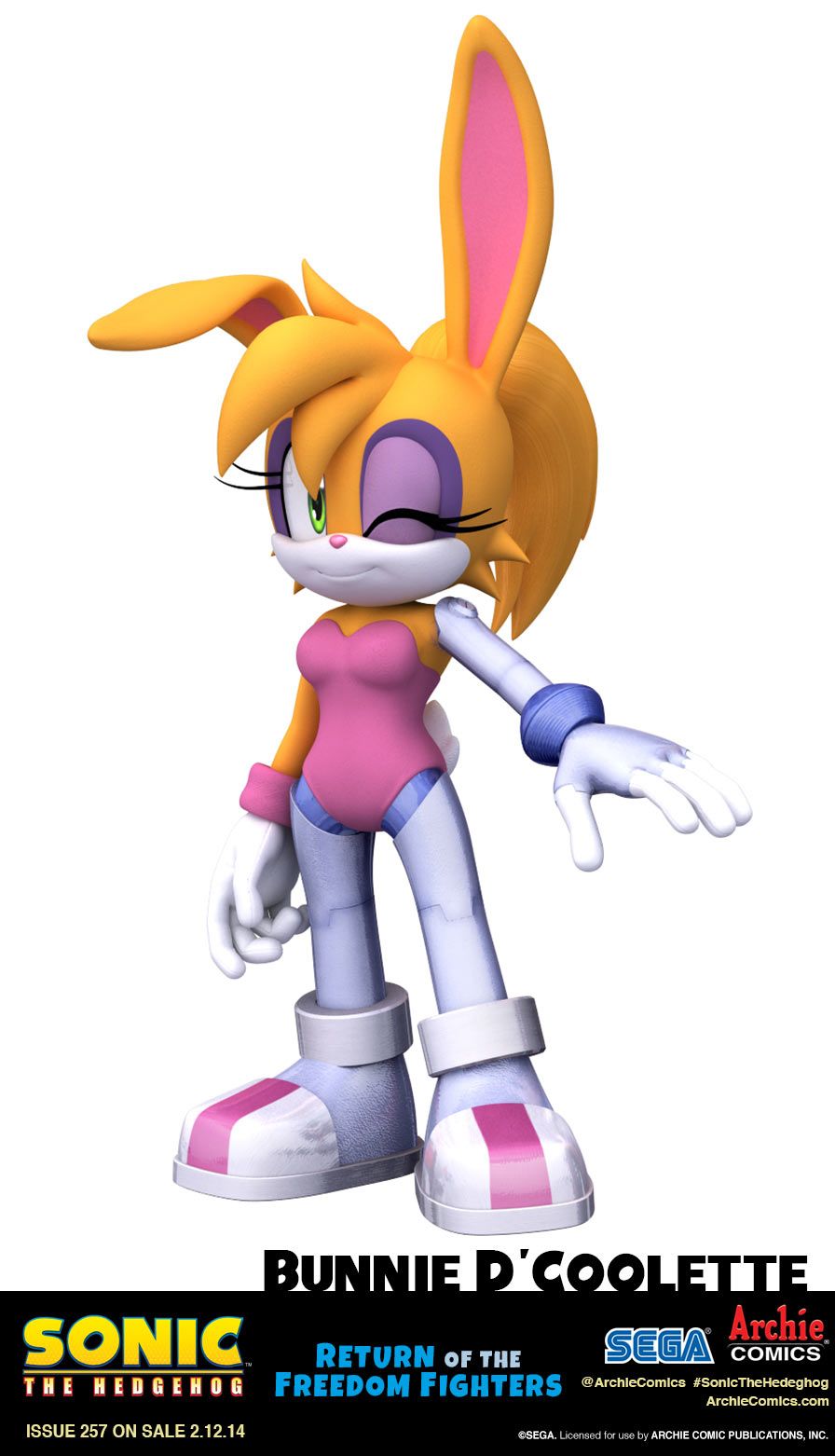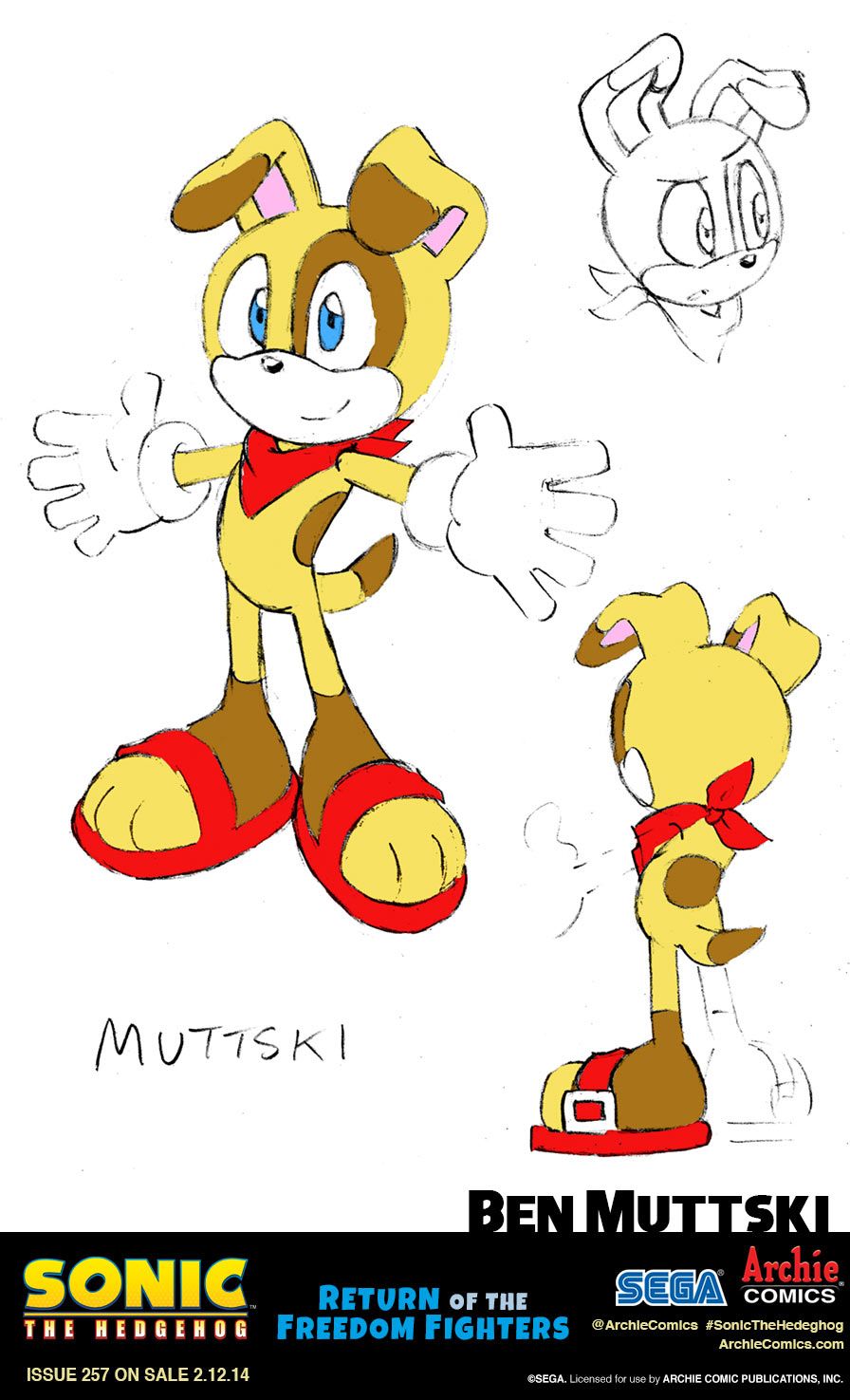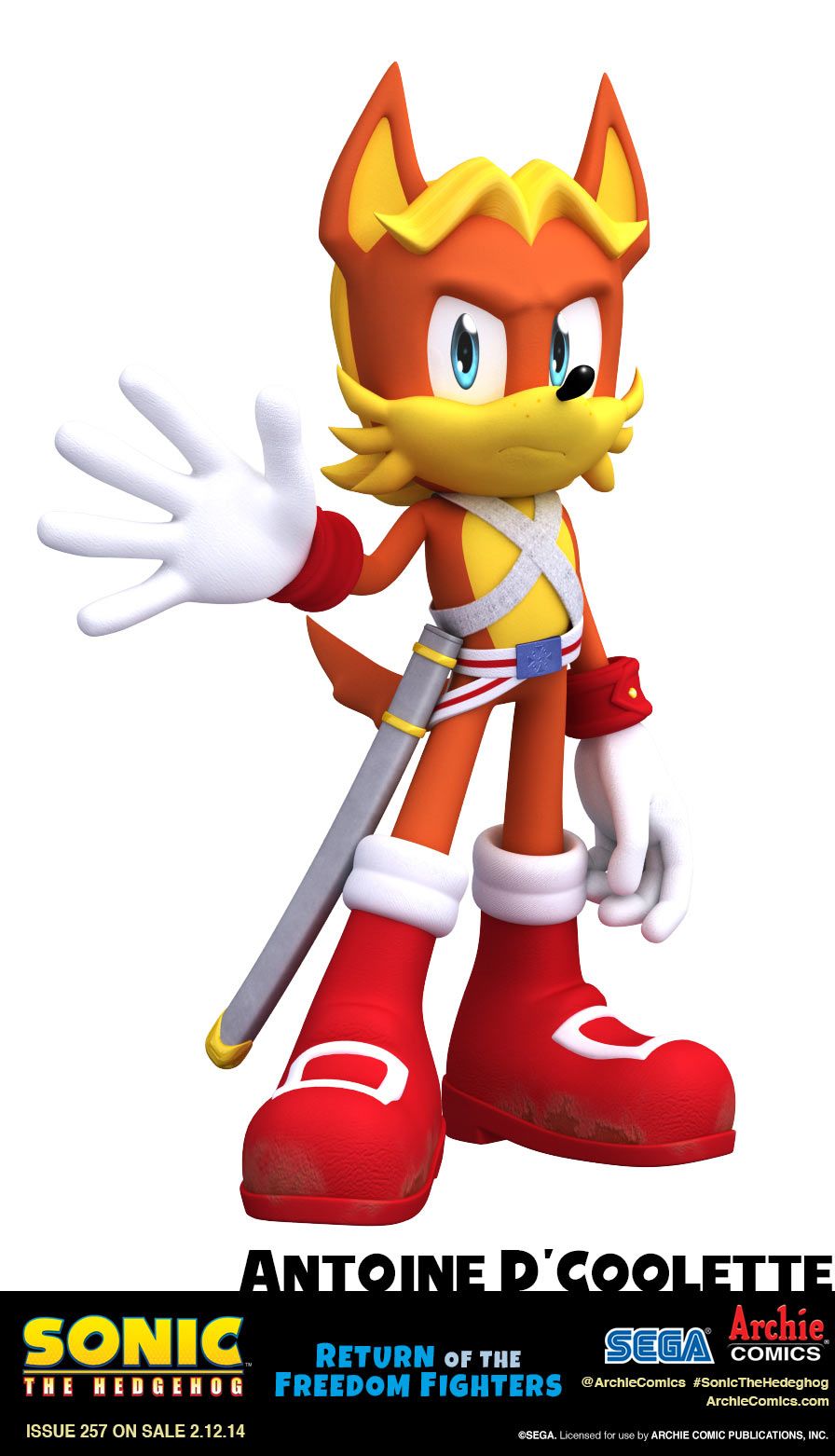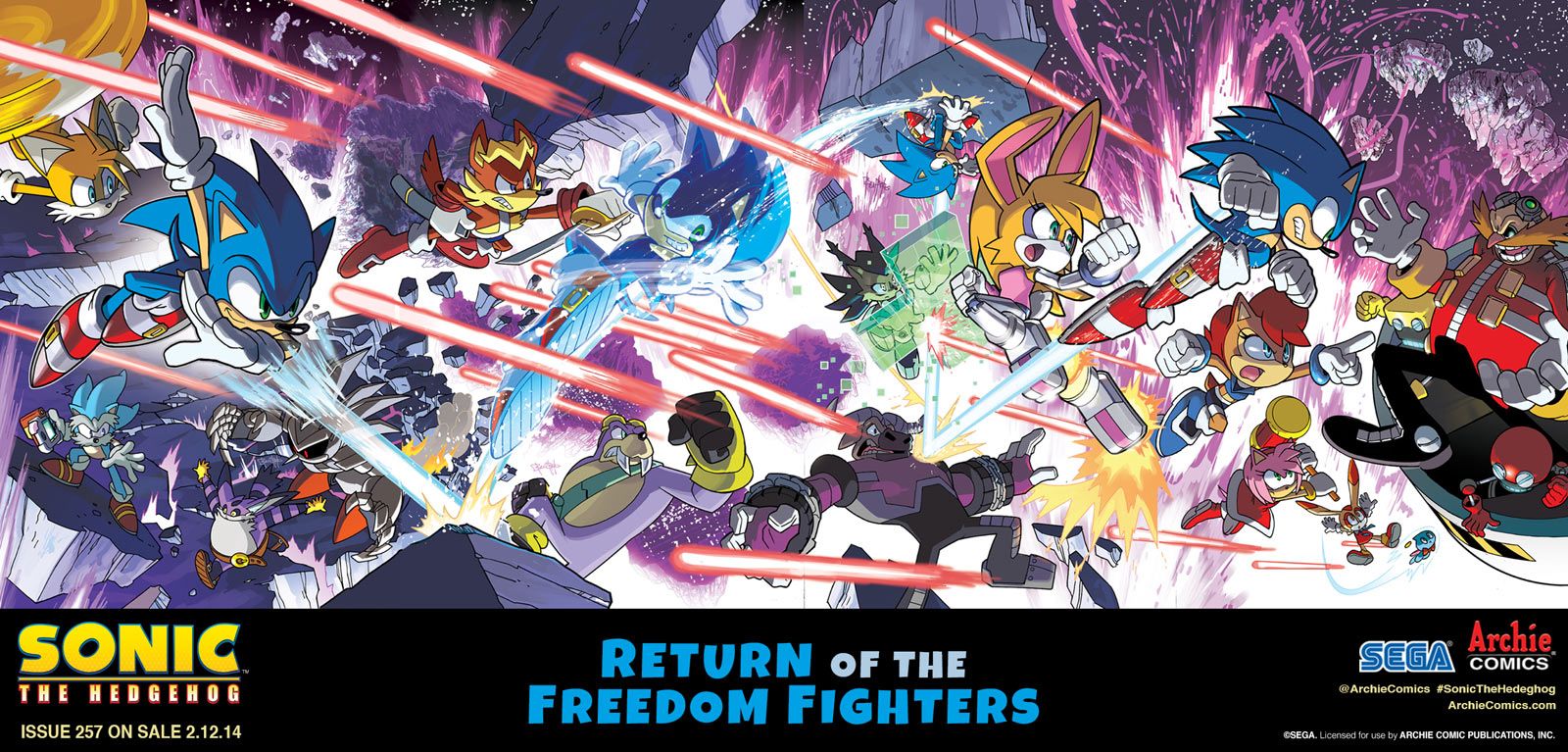Over 20 years ago, Sonic The Hedgehog spun out of his Sega video game adventures and into an improbably long-running comic series from Archie Comics.
Aside from the character's four-color staying power, perhaps the most surprising thing about the Sonic comics is that their core cast were based on a short lived Saturday morning cartoon whose stories never appeared in the video games. Recently, Archie has taken steps to draw the game and comics worlds closer together by rebuilding the comics' Freedom Fighters cast like Princess Sally and Rotor The Walrus to hew closer to the console adventures. The changes arrived in the wake of the recent Sonic/Mega Man crossover "Worlds Collide" and take their final form this week when "Sonic The Hedgehog" #257 ships to comic shops.
To help uncover the changes hitting the long-running series, CBR News spoke with "Sonic" writer Ian Flynn and Archie Executive Director of Editorial Paul Kaminski about the move. Below, the pair share exclusive character designs and explain why the wake of the Mega Man crossover was the perfect moment to reintroduce the Freedom Fighters cast, how they turned the two decade-old cartoon characters into CGI heroes and what threats lie ahead for Sonic and company in the months ahead.
CBR News: Archie's "Sonic" titles are in the midst of some changes right now with a soft reboot affecting the universe and some facelift redesigns for the Freedom Fighters cast of the book. I get the impression this was in the planning before the big Mega Man crossover, but how did the timing work out to make these new stories come together?
Ian Flynn: Well, when you have all these people coming into the world from the crossover, you don't want to lose that momentum. They're excited by the crazy finale we had, and so they're expecting some big stuff when we come back to "Sonic." The wonderful thing about the crossover was that it gave us the opportunity to play with Sonic's world and hit the ground running with a new art direction and a new story direction that wasn't necessarily bogged down by anything. You can just say, "Here it is. This is what we've got. Let's have fun with it."
Paul Kaminksi: It was also an important point for us to make the crossover have consequences. I remember that there were two points when I knew the crossover was just going to be the best thing I ever read. The first one was when Ian was describing the Eggman/Wiley bromance. That had me tickled to no end. With the bicycle built for two and the mimosas and everything, it was just perfect. Then when we started talking about how the end would go and how it would facilitate this change in Sonic's world based on the Super Genesis Wave, it suddenly made a whole lot of sense. It made a shocking amount of sense actually, because as you said, we'd been talking about giving the Sonic line a facelift for quite some time. The "Genesis" story we did back in issue #225 was the first time we dipped our toes into that water, and this was the perfect opportunity to make it feel organically a part of the story. A lot of times with these kinds of changes, things can feel extremely forced and not a part of the story at all. But the way "Worlds Collide" ended and "Sonic Universe" picked it up and went right into "Countdown to Chaos," that was the perfect way to make those changes.
So far we've seen Sonic's team of Freedom Fighters reintroduced one-by-one with little memory of the world that came before, and Eggman has himself been grappling with the fact that the world seems remade. How did you go about the task of decided what stayed and what went?
Flynn: Part of it was looking at the overall tone and structure of the series. Sonic is a ridiculously long-lived license book. Don't ask me how we've maintained it that long, but over the years it has kind of deviated from its original basis. So one of the things we wanted to do was bring it a little more in line with the game world so that folks who were coming in off of the new games and other new media would feel at home. But at the same time, after 250 issues there is a lot of material that fans have come to love that is the image of what the Sonic comic is. So when we were going over how to restructure things, it was a hard look at what was there and what deserved to be kept around. It was, "What here makes Sonic stronger as a story?" That's how we decided who made the cut. Does this bring something new and meaty to the experience? If not, we can find another place for it later on down the line. But if it really does make the universe stronger, let's bring it in line with the new look of things so this is a more cohesive universe. Let's put out a more solid, stable-feeling product.
Kaminksi: I think it was New York Comic Con 2012 when I first got this gigantic packet from Ian that outlined everything that we were thinking about doing with the new universe and how it'd be done. It felt so refreshing! With a continuity-heavy book, you can get bogged down really easily. This aloud us to pick out things a la carte and put them into the framework of the modern franchise. You don't want a licensed title that looks nothing like the property as it currently stands. That doesn't make any sense. And this is a shift that's been taking place in some form in the book for a long time - maybe since its inception. So this is just a continuation of a changing franchise and how that's reflected in a comic book that's now in its 21st year of production. Longtime fans will remember things like when Sonic ran really fast one time and got green eyes from it. Don't ask me how or why. It just happened. [Laughs] These types of things have been happening in the book for a long time, and I felt like this was a better way to make it happen. It was a story point that was well thought out.
It's funny because when you look at the early Sonic game box art from Sega Genesis and then at the character as he appears on games today, there are some pretty critical differences. What did you identify as the important visual touchstones when you started to update the characters of the comic to match that transition?
Flynn: It boiled down to saying, "Let's make them look as if they could fit into the next Sonic game if it were released tomorrow." There was a lot of hard studying of what the design aspects of the series are today. In the games, there are 20 or 30 characters you can pull from, but there are some reoccurring themes and rules that those characters seem to follow. We applied that to the old cast who have seen their changes too, but they were mostly based on these '90s concepts that were thrown into the brand in a cartoon. Now that they've become really ingrained with Sonic as a franchise, we wanted them to look like they belong. So applying those themes to the old cast brought them forward into the modern design sense without making them unrecognizable as individual characters.
Kaminksi: We went through lots of different revisions on these designs and different artists. Ryan Jampole who did a lot of work on the Mega Man comic last year and continues to do covers for us contributed, and Tracy [Yardley] got a crack in. Ian and myself and everyone chipped in. I think at one point there were 20 people on one e-mail chain all shouting at each other about Rotor's look. [Laughter]
Flynn: Everyone's going, "The hair shouldn't look like that! It should look like this!"
Kaminksi: You would not believe the spirited discussions that each character got. And once we had the designs, we took them to Rafa Knight who's been doing a lot of great covers for us, and she took them and made them into 3D video game-type models. Then we could take those and say, "Here it is! Here's the design!" That's what you see on the cover to #257 which comes out on February 12. You can see the Freedom Fighters in their final form there.
A lot of these changes also seem to be getting a spotlight in the upcoming "Sonic" Free Comic Book Day issue. Do you view what's coming up as a new origin for this cast who originated in cartoon form?
Flynn: More or less. The folks who grew up on the old stories and the cartoon will still find this all familiar. But it's been 20 years since the cartoon went off the air, so it needs updating. One of the critiques of the old cartoon that the comic was originally based on was that everything wasn't really about Sonic. Sally was more the main character. So we're reorienting this so it fits better with the brand. The story is largely the same, and the veteran fans will feel right at home with what's going on. It's just going to feel like a part of Sonic's universe rather than something that Sonic was just attached to. Everything will be nice and cohesive as one big thing.
The just-wrapped "Countdown to Chaos" story really reset these characters and their identities for readers. Once you had that done, what was the first big story you wanted to tell from #257 on?
Flynn: The story immediately after "Countdown to Chaos" is called "Damage Control," and it's throwing the characters directly into the fire. We've spent six months reintroducing them. If you're new to the series, you know who they are now. If you're a veteran of the series, you know what they are in this incarnation. So now let's throw them in and see how they deal with the challenges of the world in front of them. The story after that is called "The Chase," which gets into how they work as a functioning team and what their group dynamic is. There's a very personal angle to this because Uncle Chuck has been put in peril, and he's very near and dear to all of them. From here on out, I've got free reign. We've got a new world to play with, the reinvented cast...it's like a brand new box of toys. There is no limit. We can do whatever we want with it. And I'll tell you, I have pages and pages of notes on where we can go with this stuff. I'm very excited about where we can take it all.
Kaminksi: We spent all of "Countdown to Chaos" getting the reorganization done, and then "Damage Control" really was a case where we said, "What's our team look like? How do they perform under stress? What kind of villains are we going to see?" It was about getting a taste of things to come. I love the idea of the team together in a new mobile base and what their dynamics we be together. We have to define what Sally's role in the team is now. She had functioned as team leader and focal point for so long, what does she do now? What's Nicole's role, and where does Rotor fit in? We've set the table for the meal, and we're about to chow down.
"Sonic The Hedgehog" #257 is on sale February 12 from Archie Comics.

